HOME
>
Printing Services
>
Binding & Finishing
Binding & Finishing
Our substantial capacity means we can confidently meet your scheduling needs,
whether you have a small project or a large run requiring several machines at once.
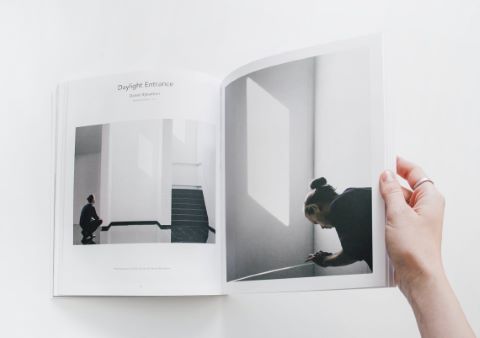
We offer various finishings and specialty printings.
We have a multitude of state-of-the-art saddle stitchers and perfect binders.
Finishing
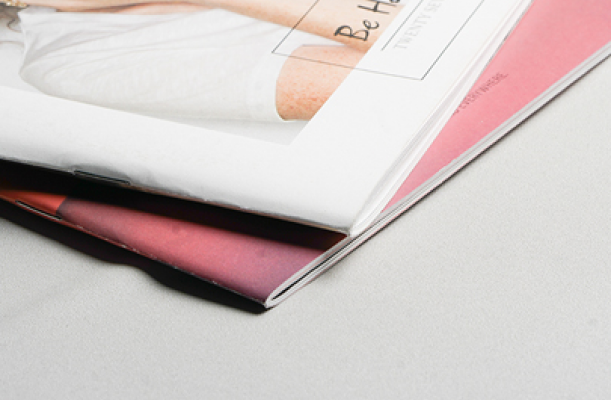
Saddle Stitching
A saddle-stitched publication has all sides of the pages trimmed except the spine.
This is to make all the outside edges even.
The "creep" causes the pages to protrude differently as the pages closest to the center will protrude more than the pages on the outside.
If the elements are too close to the outer edge of the page, they may be trimmed off when we trim the
pages to avoid a noticeable creep.
binding

trim
creep
Saddle-stitching is ideal for those who opt for a self cover, are using a low paper weight, or have a small amount of pages to be bound.
The process is to staple the pages in the center of the binding.
It is most commonly used for catalogs and thin magazines.
Saddle-stitch requires that pages be in multiples of 4.
Files for the pages and covers should be submitted as single pages.
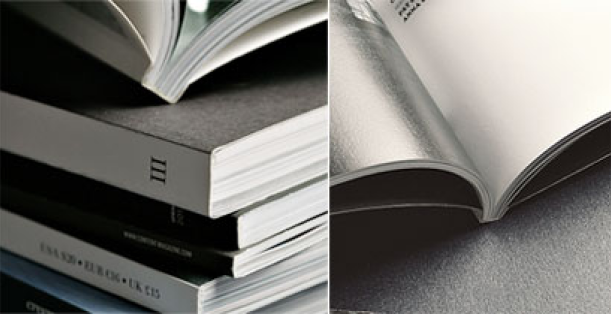
Perfect Binding
A perfect bound publication has all sides of the pages trimmed even at the spine.
This called the "grind". The pages are "ground-off" to insure that the inside pages' edges are all even.
Perfect binding glues all of the pages to the spine of the cover.
The result is a completely even edge on the outside.
This binding is optimal for those with many pages and a heavier paper weight cover.
It is commonly used for higher volume magazines and luxury catalogs.
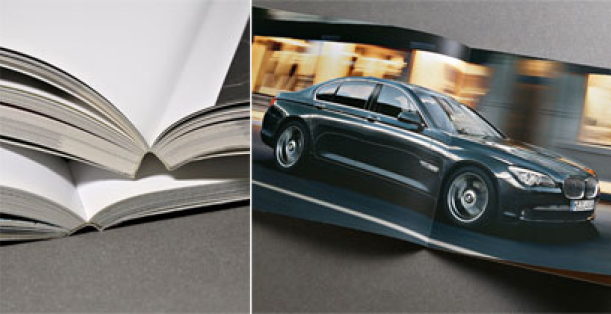
PUR Perfect Binding
PUR (polyurethane reactive) binding follows the exact same process as perfect binding except we
change the glue from Perfect Binding Adhesive to PUR Adhesive by exchanging the glue pots.
PUR glue reacts with the moisture content in the paper and the chemical reaction creates a much
stronger bind than the conventional glue.
PUR is the strongest, most flexible binding adhesive available.
The thin, tough, and flexible consistency of PUR enables the magazine to open easily and can lay open
flat. It's the optimal choice for projects that will see frequent use and demand durability.
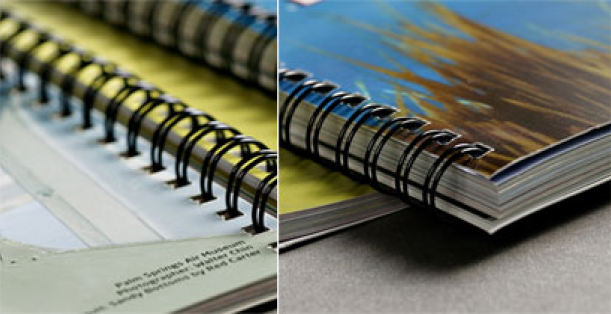
Spiral Binding
A spiral binding consists of a continuous wire, which is coiled through evenly spaced holes that have been punched into the pages of a book.
The spiral wire can be made of metal, plastic, or plastic coated metal.
When the books are open, the pages lie flat.
The pages can also be folded over completely, which makes spiral binding a good choice for training
manuals, cookbooks, notebooks, and calendars.
Print Coating
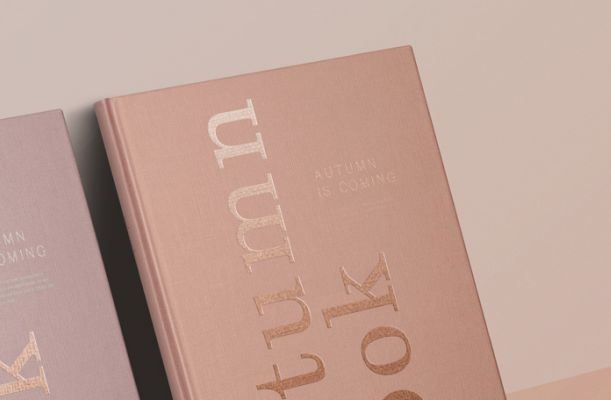
Coatings are applied to the protect the printed pages from moisture, extreme temperatures, scuffs, scratches, and frequent handling.
They are also used to draw the eye to a particular element on the page.
We offer four types of print coatings: overprint varnish, aqueous coating, lamination, and UV coating.
All four are available in matte, dull, satin, and glossy.
Please note that coatings appear differently on uncoated paper versus coated paper.
If you plan on writing or rubber stamping on your publication, we suggest not using any coating as it will limit your ability to write on the paper.
Laminate
Lamination comes in two types, film-based and liquid-based.
Either a clear plastic film is laid down over the sheet of paper or a clear liquid is spread over the sheet and dries (or cures) like a varnish.
Liquid lamination protects paper from water but is slow to apply and is costly.
However, it provides a strong, washable surface.
Film lamination features a high gloss finish with a very smooth, tough finish.
This durable plastic film has advantages over liquid coating at a slightly higher cost.
Film lamination will not yellow with age, flake off, and is scratch resistant.
In addition, the ink is protected from cracking and provides an odorless/wipeable surface.
UV Coating
Ultra-violet coating is the glossiest coating available and is less commonly available in dull and matte.
UV coating is a clear liquid that is spread over the paper like ink.
It can be used as a spot covering to accent a particular image or logo on the page or as an full page (flood) coating.
UV coating gives more protection and shine than varnish or aqueous coating.
UV coating is unsaturated polyester or polyacrylate based and when exposed to ultraviolet light, dries instantly. UV coating offers excellent rub protection.
UV coating is applied as a separate finishing operation as either a flood coating or (applied by screen printing) as a spot coating.
Keep in mind that this thick coating may crack when scored or folded.
Aqueous Coatings
Aqueous coatings are water-based and are applied by an inking unit of the press or in a special coater.
Aqueous has the advantage over varnish because it dries immediately and has glossy characteristic that falls between varnish and UV coating.
Since aqueous can be applied over wet ink, can seal the printed sheet, and can dry immediately, it has the practical advantage of reducing handling time for trimming and other post-press operations.
The disadvantage of aqueous is that since it is water-based it can cause paper to curl, particularly on thinner paper weights.Additionally, certain pigments may bleed with aqueous.
Aqueous coating is only recommended for coated sheets as it will be absorbed by uncoated paper stocks.
Print Coating
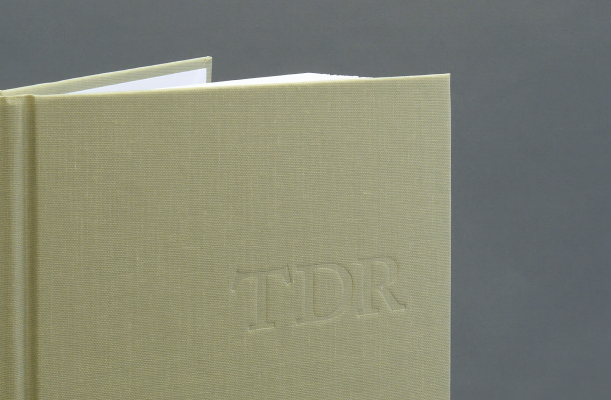
Foil Stamping
When a print project needs an elegant, non-tarnishing metallic finish to be applied to paper, it’s easily done using a process referred to as foil stamping or hot stamping.
A wide selection of foil colors, finishes, and effects are available such as: gold, silver, colored metallics, marble, leather, wood, snakeskin, and pearl finishes; in geometric multi-dimensional patterns.
Embossing
Embossing is a process that applies pressure to the backside of paper to alter the surface, giving it a three dimensional or raised effect. It is often used in combination with foil stamping.
The procedure involves the use of two dies, one fitting into the other so that the raised die forces the paper into the recessed die to create the embossed impression.
The die maker engraves the desired image into several metal plates, which are the embossing dies for the embossing press to use.
Generally, embossing is the process most used to attract attention or to convey a high quality textural contrast. Also available is debossing, the opposite effect of embossing.
Die Cutting
Die cutting is the process of cutting shapes from sheets of plastic by pressing a shaped knife edge into layers of sheeting.
The dies are often called steel rule dies and pressure is applied by a hydraulic or mechanical presses. The main method of die cutting involves the use of metal dies to give paper specific cut out shapes or designs that cannot be accomplished with a straight cut on a guillotine cutter.

